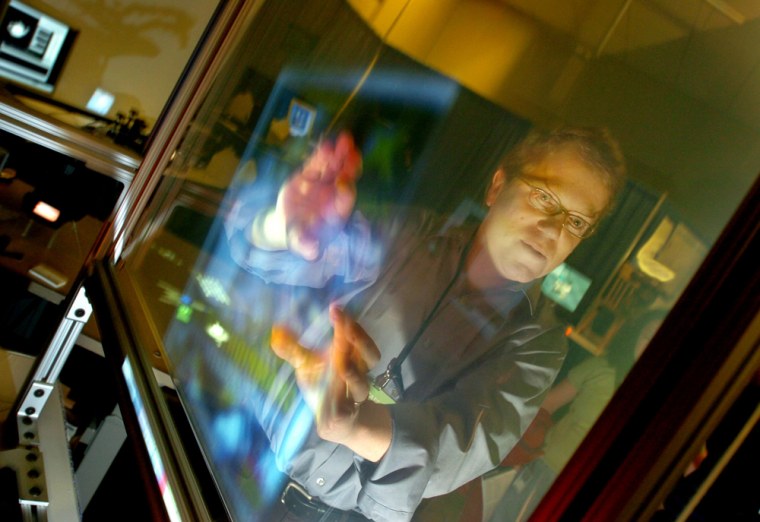The teddy bear sitting in the corner of the child's room might look normal, until his head starts following the kid around using a face recognition program, perhaps also allowing a parent talk to the child through a special phone, or monitor the child via a camera and wireless Internet connection.
The plush prototype, on display at Microsoft Corp.'s annual gadget showcase Wednesday, is one of several ideas researchers have for robots. The idea is to create a virtual being that can visit the neighboring cubicle for a live telephone chat even as its owner is traveling thousands of miles away, or let the plumber into the house while its owner enjoys a pleasant afternoon in the sun.
Plenty of companies are already building robots for the work place, and toy companies have created plush dolls that know a child's name or can incorporate other personal information. But Steven Bathiche, a research and development program manager with Redmond-based Microsoft, said his company's projects go further. "The vision behind this is to be two places at once," Bathiche said.
The "Teddy" project was one of about 150 projects on display at Microsoft's TechFest, a two-day event that gives Microsoft's worldwide team of researchers the chance to show product developers their sometimes far-flung creations, and perhaps find a fit for the projects in a future, marketable product.
TechFest opened Wednesday, mainly to full-time Microsoft employees. The company expected about 6,000 to attend, including Chairman Bill Gates and other executives. A few government officials, academics and journalists also were allowed.
(Microsoft and NBC are partners in MSNBC.)
Better commuting
Raman Sarin, a Microsoft development engineer, was just looking for a way to learn more about programming smart phones when he decided to create a program to monitor traffic — a constant complaint in the car-clogged Seattle area. The result is SmartPhlow, a program that not only monitors current traffic patterns but also uses real-time and archived data to predict when the next backup might occur.

SmartPhlow, which can work on a technologically advanced smart phone or a regular desktop computer, takes into account everything from weather to sporting events to accidents in making its predictions. It also looks at traffic relationships — if a northbound freeway is backed up, for example, it may be able to gauge the ease or difficulty of a westbound commute.
Sarin said at least 2,000 Microsoft employees are now using a prototype of the product in the Seattle area. Microsoft is talking with the state Department of Transportation about sharing its interface with the government, and is considering working with other developers to sell it as a national product.
The team of researchers also are thinking about how to make commuting less annoying. One idea: connecting the traffic predictor to an alarm clock, allowing the user to sleep in a few more minutes if traffic is looking light, or rousing the commuter if it's looking like a rough day on the highway.
